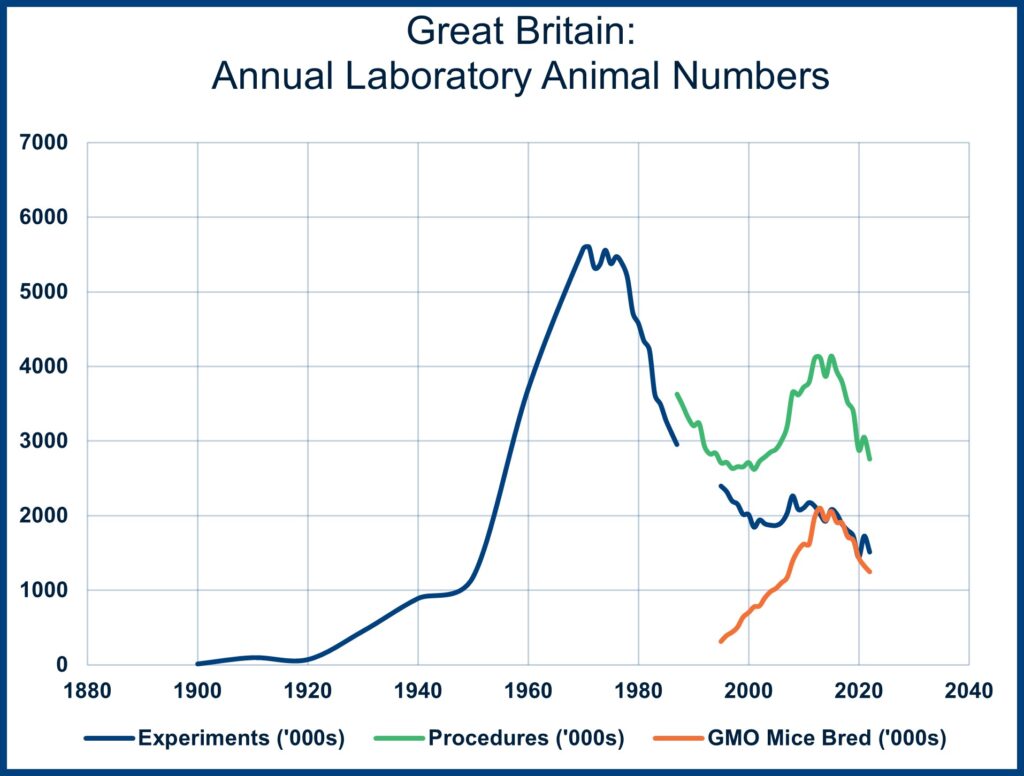Since the inaugural World Congress in 1993 spearheaded by Dr. Alan Goldberg in Baltimore, substantial strides have been made in the reduction and substitution of laboratory animals. The event, which saw Dr. Bill Russell, coauthor of the seminal 1959 work on alternatives, serenade attendees with a spirited rendition of “alternatives” set to a tune by Gilbert and Sullivan, marked the genesis of a global initiative. Subsequent Congresses, convened biennially or triennially across various locales worldwide, have continued to champion this cause. In 2001, the establishment of the Alternative Congress Trust as a charitable organization in the USA aimed to facilitate fundraising efforts and provide ongoing support for future Congress organizers.
A historical overview of laboratory animal utilization in Great Britain from the 19th Century to the present day sheds light on broader trends potentially applicable to Europe and North America. The data delineates a surge in laboratory animal usage following World War II, succeeded by a precipitous decline from the mid-1970s to the early 1990s, only to witness a resurgence thereafter.
The latter upsurge in animal procedures, albeit with a relatively stable number of experiments, spanned approximately two decades. This resurgence was fueled by advancements in gene-editing techniques enabling the creation of genetically modified mice harboring specific disease phenotypes. Between 1993 and 2015, millions of such mice were bred with the anticipation that ensuing research would yield deeper insights into challenging human ailments and potentially novel therapeutic avenues. However, despite notable progress, these innovative methodologies are yet to fully realize their envisioned potential.
The chart below tracks the changes in laboratory animal use in Great Britain from the 19th Century to the present. It likely provides a window into laboratory animal use in Europe and North America[i]. As the chart indicates, there was a rapid increase in laboratory animal use after World War II, followed by an equally rapid fall from the mid-1970s to the early 1990s, when animal use started rising again.

In 2019, the decision by the Wellcome Sanger Institute and the UK Medical Research Council to shutter their programs dedicated to breeding genetically modified organisms sparked mixed reactions within the scientific community. Jeremy Farrer, director of the Wellcome Trust, defended the move as a “positive story,” citing a reduction in animal usage attributable, in part, to the emergence of alternative techniques such as tissue culture methodologies employing induced pluripotent human stem cells.
The transition towards research predicated on human cell cultures emerges as a pivotal factor contributing to the waning reliance on mouse breeding and animal experimentation in Great Britain. A discernible decline in both the breeding of mice and the overall number of animal experiments commenced in 2015. Although the proliferation of genetically modified organism (GMO) mice precipitated an upward trajectory in total laboratory animal procedures from around 1995 to 2015, the actual utilization of animals in experimental contexts remained relatively static, progressively tapering off post-2015.
Comparable trends in laboratory animal utilization, characterized by a zenith in the 1970s followed by a sustained decline, are evident in reported data from Great Britain, the Netherlands, and Switzerland. While precise estimates for rat and mouse utilization in the USA are limited, available statistics pertaining to other laboratory rodents and rabbits mirror analogous patterns of peak utilization in the 1970s followed by a steady decline. By 2020, the utilization of hamsters, guinea pigs, and rabbits in the USA had plummeted to approximately 25% of their 1970s levels.
Quantitative metrics alone do not encapsulate the positive strides made in advancing non-animal methods (NAMs) and alternatives to traditional laboratory animal usage. In 2015, a landmark report by Innovation UK underscored the burgeoning significance of NAMs, advocating for enhanced governmental support for their development and commercialization. Collaborative efforts between Innovation UK and the National Center for the 3 Rs culminated in a £4 million funding initiative aimed at driving the adoption of non-animal technologies.
Similar initiatives have been undertaken globally, with governmental bodies in the Netherlands and Australia commissioning reports outlining pathways to facilitate the transition towards animal-free research and testing. Concomitantly, the 2007 US National Academies of Science report advocated for a paradigm shift away from animal methods in safety testing and chemical regulation. The establishment of entities like the National Center for Advancing Translational Sciences (NCATS) within the National Institutes of Health system underscores a concerted effort to fund the development and refinement of NAMs. Legislative endeavors in the USA, particularly involving regulatory bodies like the FDA and EPA, further accentuate the imperative to embrace NAMs and diminish reliance on animal testing.
Projections by WellBeing International augur a sustained global momentum towards reducing dependence on laboratory animals, coupled with notable enhancements in the efficacy and human relevance of biomedical research and chemical safety testing methodologies.
[i] There have been several changes in how the use of laboratory animals is tallied in Britain. The most significant change occurred in 1987 when the British Home Office switched from counting animal “experiments” (typically, the use of one animal equaled one experiment) to tallying animal “procedures.” A procedure included the use of animals in experiments and the breeding of animals for experimental use. The switch increased the annual tally of animals in research by around 20%. The number of animals being bred increased from a few hundred thousand in 1987 to about two million in 2012. The actual “use” of animals in experiments hovered around two million from 2000 to 2015, when experimental use started to fall again.


